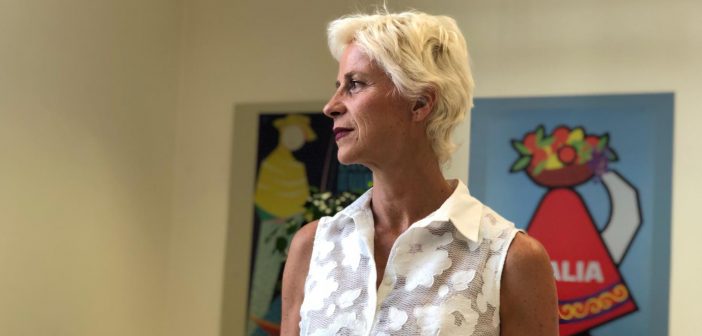In an exclusive interview with BBMag, we talk to the Marketing Director of ENIT (The Italian Tourist Board) about the current and future prospects for tourism in Italy
BBMag: Welcome, Maria Elena Rossi! Please tell us a little bit about yourself, where you come from in Italy, and what is your role at ENIT—Italy’s Tourist Board.
Rossi: I work as ENIT’s Marketing Director and my job is to implement strategies to promote tourism in Italy. We research trends in supply and demand with the aim of increasing the movement of national and international tourists in Italy and develop campaigns and promotional strategies aimed at certain audiences.
I am responsible for addressing the overall image of the brand “Italy”, in accordance with the vision and values of ENIT. I manage the distribution channels of tourist flows, taking into account the characteristics of the target audience to identify potential markets and competitors, monitoring trends to develop new industry guidelines in the sector.
BBMag: BBMag readers are based in London and also throughout the UK, please tell us the importance of this market to Italy and ENIT.
Rossi: In 2019, the British market had a major impact on the Italian tourism sector, with over 6.4 million visitors from the UK (who collectively spent 36.4 million nights in Italy).
These figures are growing; over the last three years, there has been an increase of 6.3% in travellers and 8.8% in overnight stays.
Also, in terms of consumption, tourists from the UK spent 3.8 billion euros in Italy, an increase of 7.6% compared to 2018. In 2018, the UK ranked in fourth for inward tourism to Italy, and despite Brexit, the flow of British tourists is up by 6% compared to 2017.
There have been some interesting increases in Puglia (15.1%), Piedmont (19.6%) and Calabria (116.7%). The top five destination hotspots include Veneto, Campania, Tuscany, Lombardy and Lazio, which together represent 67.6% of British tourism in Italy.
Most tourists favour hotel accommodation, 74.3% in fact. This is proportionally high when compared to visitors from other countries (64.3% of overnight stays by foreign tourists are spent in hotels).
That said, the highest increase in accommodation was recorded in non-hotel establishments: 14.1% against 3.4% in hotels.
Revenues from tourism passed 3,548 million euros, an increase of 17.2% compared to 2017. Lazio (677 million), Tuscany (513 million), Veneto (482 million), Campania (447 million) and Lombardy (410 million) accounted for 71.3% of total expenditure.
BBMag: What security and safety measures are in place for airports, hotels, tourist attractions and so on during Covid-19?
Rossi: WHO classified Covid-19 as a “pandemic” on 11 March. To limit its spread, restrictive measures have been gradually adopted on a global scale (suspension of air traffic, border closures, compulsory quarantine, health checks), and Italy is no exception.
According to the Prime Ministerial Decree of 11 June 2020, for travel to and from the EU Member States and to and from Italy, the States part of the Schengen Agreement, the UK, Andorra, the Principality of Monaco, San Marino and the City of Vatican are no longer subject to limitations. Travel to these countries is therefore also allowed for tourism.
Entry into Italy from countries outside the EU and/or the Schengen agreement continues to only be allowed for essential work, health emergencies, and documented study requirements (from 30 June 2020). However, the obligation of health surveillance and self-isolation remains for all persons who enter Italy (or return to Italy from a trip) from States or foreign countries other than those belonging to the European Union, States part of the agreement of Schengen, the UK, Andorra, the Principality of Monaco, the Republic of San Marino and the Vatican City State, or those who have stayed there in the 14 days prior to entering Italy.
For those who enter the national territory for work reasons, as well as for the staff of companies or bodies with Registered or secondary office or in Italy who go abroad for proven work reasons, the period of stay without obligation of home quarantine is 120 hours (5 days) (DPCM 11 June 2020). Travellers can consult the website italia.it for guidelines.
BBMag: How long do you believe it will take for tourism in Italy to return to the same level as it was before Covid-19?
Rossi: Much will depend on how safe we can make travel again and, of course, the trend of infections. The boom levels of tourism experienced in Italy in 2019 will likely return in 2022 for domestic travel and 2023 for international. But, of course, we hope to expedite things where possible.
In fact, we are already seeing signs of recovery from local tourism and indeed the UK market. The fall in bookings is beginning to plateau, especially from neighbouring countries, and this is not only a positive sign but confirms that Italy is a high demand destination. The most pronounced slumps in bookings have come from long-haul markets; demand from Japan, Brazil, South Korea, as well as the USA and Australia has been slashed in light of travel restrictions.
BBMag: Is it important that people book in advance to visit the galleries and monuments in Italy and how easy is it to do so?
Rossi: Access is currently managed online or via telephone reservations. There is a maximum number of visitors allowed at certain venues and access is regulated to avoid unnecessary gatherings of people.
In anticipation of inviting people to enjoy Italy’s immense cultural heritage once again, the major Italian museums have decided to make their spaces and displays accessible in the virtual realm: with just a smartphone, a tablet or a PC you can immerse yourself in the beauty of art from the comfort of home by visiting, for example, the Sistine Chapel, Vatican Museums, Egyptian Museum of Turin, Brera Art Gallery, Uffizi Gallery, Quirinal Stables, Milan Cathedral, Museum of Canovian Plaster Cast and the birthplace of Canova.
BBMag: What are ENIT’s plans and strategies to promote Italy in the UK?
Rossi: We are working closely with regions and tourist destinations to agree on the timing and methods of fuelling demand. We have intensified discussions with the representatives of the Italian System abroad, in particular with diplomatic representatives, and other institutional entities that promote Italy across the world. We are acutely aware that we must face these challenges together and gear up the supply chain accordingly.
Some cities that rely on international tourism, such as Venice and Florence, are going through a period of heightened uncertainty and anxiety, while others like Turin and Naples are beginning to see the shoots of recovery as domestic visitors decide to travel again.
With 28 locations, our lean structure—with a presence in major international markets—has allowed us to maintain an open dialogue with the world during the lockdown, and to work as a team to manage communication, relations with stakeholders, and feed a new digital ecosystem. This enhancement of virtual experiences has proved critical to the storytelling of our regions, cultural institutions and the broader business world. We have also seen increasing interest in ENIT’s virtual reality app, which we will implement in the coming months.
BBMag: If you were taking a holiday out of season (e.g. November), which Italian regions would you recommend and why?
Rossi: Rather than any one place, I would suggest the Peninsula. And I would recommend a journey of discovery, rather than anything overly prescribed. Be surprised by places off the beaten track and the opportunity to take in the cities of art under your own steam.
BBMag: Tell us in a few words what Italy has to offer to British tourists and travellers.
Rossi: Italy has always been one of the dreamiest and coveted destinations, and with measures in place, the authentic Italian experience can be practised safely from any risk of Covid-19. With the highest number of UNESCO sites, 55 in total, the tourism bounce back of this beautiful country reflects the traditional values and the art of good living and sustainability.
History, tradition and cultural heritage are always a motivation for tourism, and that impulses visitors to the Peninsula and, even in this difficult moment, contribute to the region’s recovery.
The crisis will offer an opportunity to appreciate the charm of the peculiarities that make Italy unmistakable and famous across the world, giving exclusive access to places where you can experience the mystery and traditions of a country famous throughout history.
Exploring the preserved sanctuary of Italy’s protected parks is one sure way of enjoying a new, sustainable form of tourism. Follow alternative paths of culinary and cultural interest, and discover the “master” scientists and musicians, those who have written world history.
Italian lifestyle and fashion will be one of the critical springboards to renewed prosperity, too. The Peninsula’s retail and local crafts are irresistible. For Italy, fashion tourism has always been a major driver for the economy, and one that is distinctly seasonal. The region’s urban centres are cult destinations among fashionistas and always attract visitors searching for Italian quality.


















